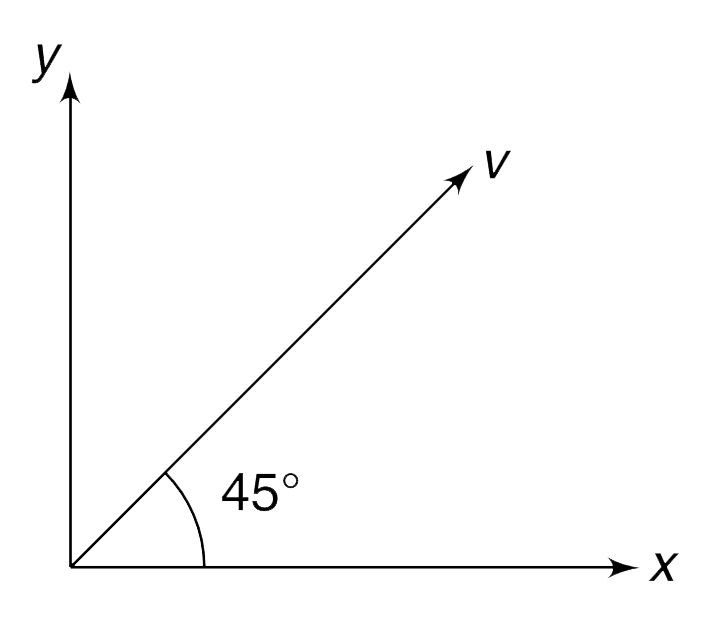A particle having mass = 100g charge q=40μC is projected with velocity 20m/s in the opposite direction of electric field of 105 v/m. Find total distance covered by particle till velocity become zero:
5m
10m
15m
20m
To solve the problem, we will follow these steps:
Step 1: Convert the mass from grams to kilograms
The mass of the particle is given as 100 g. To convert grams to kilograms, we use the conversion factor 1 kg=1000 g.
Mass=100 g1000=0.1 kg
Step 2: Convert the charge from microcoulombs to coulombs
The charge q is given as 40μC. To convert microcoulombs to coulombs, we use the conversion factor 1μC=10−6C.
q=40×10−6 C=40×10−6 C
Step 3: Calculate the force acting on the particle due to the electric field
The electric field E is given as 105 V/m. The force F acting on the particle can be calculated using the formula:
F=qE
Substituting the values:
F=(40×10−6 C)×(105 V/m)=4 N
Step 4: Calculate the acceleration of the particle
Using Newton's second law, F=ma, we can find the acceleration a:
a=Fm=4 N0.1 kg=40 m/s2
Since the particle is moving in the opposite direction of the electric field, this will be a deceleration, so we take it as negative:
a=−40 m/s2
Step 5: Use the kinematic equation to find the distance covered until the velocity becomes zero
We can use the kinematic equation:
v2=u2+2as
Where:
- v=0 m/s (final velocity)
- u=20 m/s (initial velocity)
- a=−40 m/s2 (acceleration)
- s is the distance covered.
Substituting the known values into the equation:
0=(20)2+2(−40)s
This simplifies to:
0=400−80s
Rearranging gives:
80s=400
s=40080=5 m
Final Answer
The total distance covered by the particle until its velocity becomes zero is 5 meters.
---
The mass of the particle is given as 100 g. To convert grams to kilograms, we use the conversion factor 1 kg=1000 g.
The charge q is given as 40μC. To convert microcoulombs to coulombs, we use the conversion factor 1μC=10−6C.
The electric field E is given as 105 V/m. The force F acting on the particle can be calculated using the formula:
Using Newton's second law, F=ma, we can find the acceleration a:
We can use the kinematic equation:
- v=0 m/s (final velocity)
- u=20 m/s (initial velocity)
- a=−40 m/s2 (acceleration)
- s is the distance covered.
The total distance covered by the particle until its velocity becomes zero is 5 meters.
Topper's Solved these Questions
Similar Questions
A particle having mass m and charge q is projected with a velocity v making an angle q with the direction of a uniform magnetic field B. Calculate the magnitude of change in velocity of the particle after time t=πm2qB.
View SolutionA point charge q=1C and mass 1kg is projected with speed 10m/s in the perpendicular direction of unifrom electric field E=100V/m. The value of latus rectum of the path followed by charged particle (in meter) is :
View Solution
Knowledge Check
A particle is projected with an initial velocity of 200m/s in a direction making an angle of 30∘ with the vertical. The horizontal distance covered by the particle in 3s is
A300mB150mC175mD125mA mass m=20g has a charge q=3.0mC. It moves with a velocity of 20 m/s and enters a region of electric field of 80 N/C in the same direction as the velocity of the mass. The velocity of the mass after 3 s in this region is
A80 m/sB56 m/sC44 m/sD40 m/sA particle of mass m is projected upword with velocity v=ve2 (ve) escape of the particle is
A−GMm2RB−GMm4RC−3GMm4RD−2GMm3R
A particle is having mass m & charge +q is projected horizontally from point O. Electric field is present and is directed vertically downward .
View SolutionA particle having charge 'q' and mass 'm' is projected with velocity (4ˆi−6ˆj+3ˆk)m/sec from the origin in a region occupied by electric field 'E' and magnetic field 'B' such that →B=B0ˆi and →E=E0ˆj (take qE0m=2). Find the time (in sec) when the magnitude of velocity of the charge particle becomes 5√5m/sec. (neglect the gravity)
View SolutionA particle having charge q=10μC is moving with a velocity of V=106m/sin a direction making an angle of 45° with positive x axis in the xy plane (see figure). It expe- riences a magnetic force along negative z direction. When the same particle is projected with a velocity v'=106m/sin positive z direction, it experiences a magnetic force of 10 mN along X direction. Find the direction and magnitude of the magnetic field in the region.

View SolutionA charge particle of mass m and charge q is projected with velocity v along y-axis at t=0.

Find the velocity vector and position vector of the particle →v(t)and→r(t) in relation with time.
View SolutionA particle of mass m and positive charge q is projected with a speed of v0 in y–direction in the presence of electric and magnetic field are in x–direction. Find the instant of time at which the speed of particle becomes double the initial speed.
View Solution
